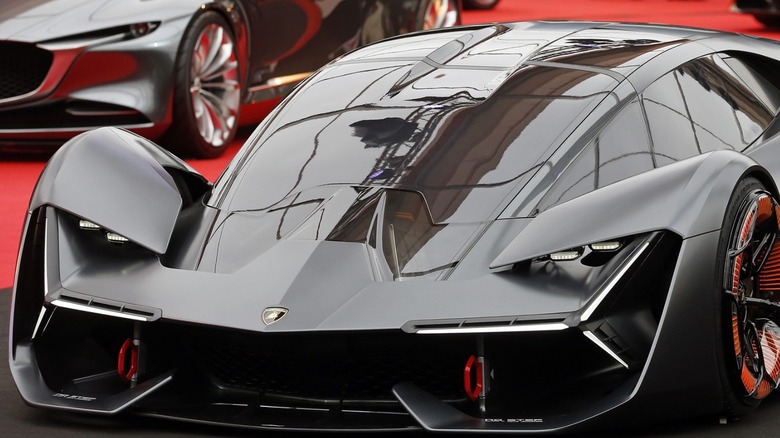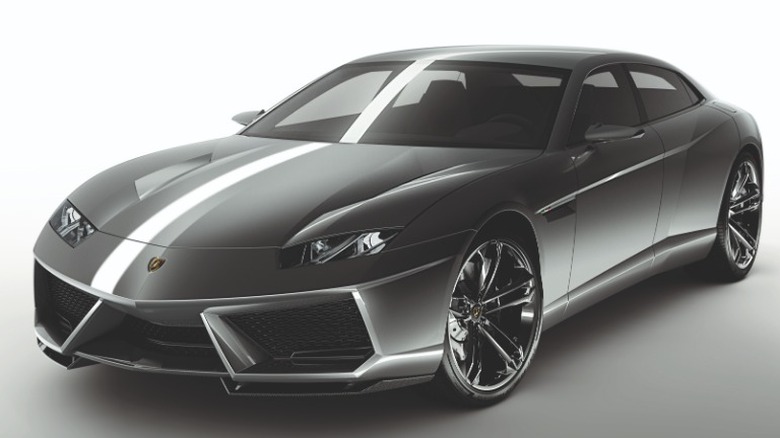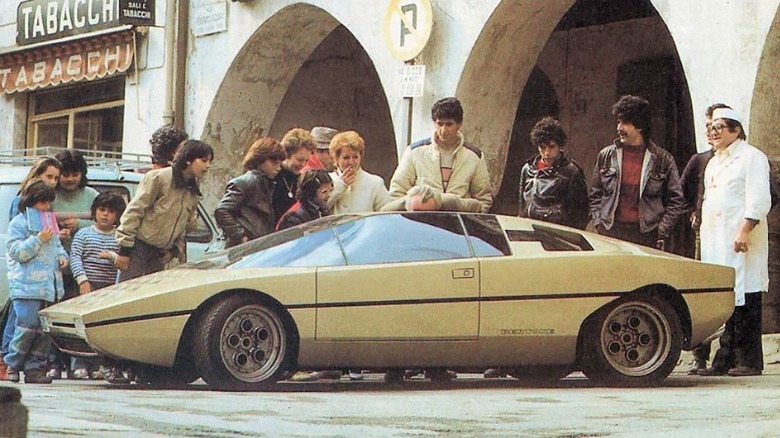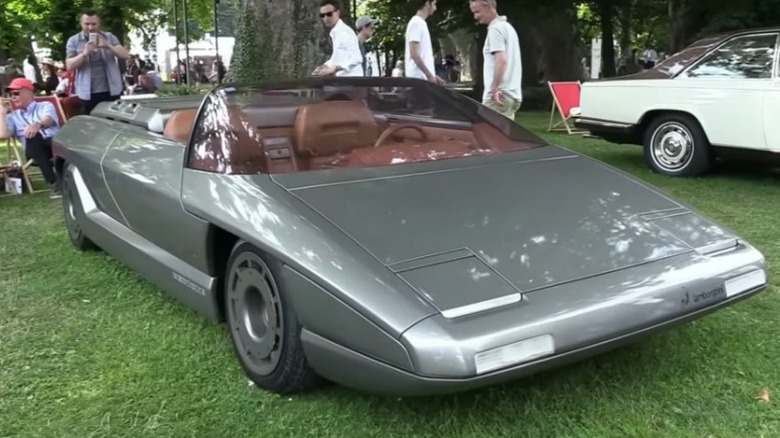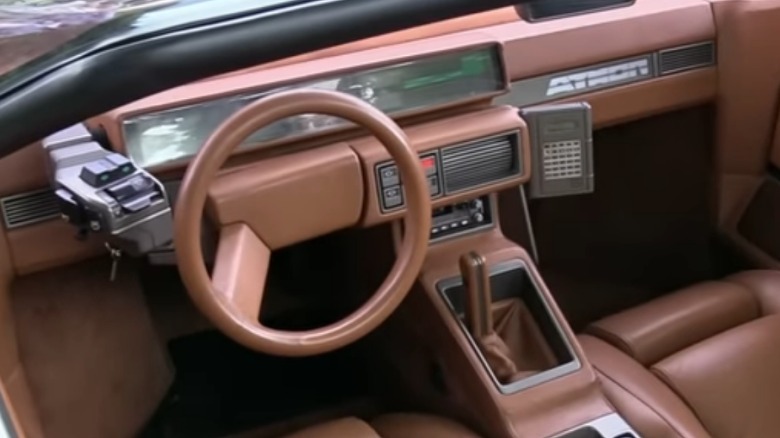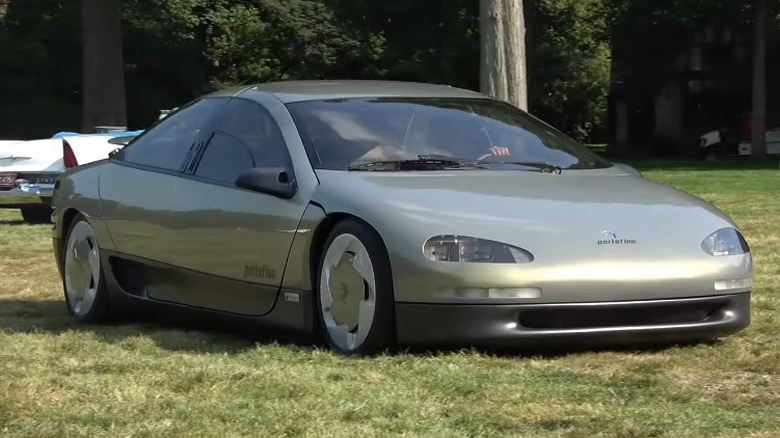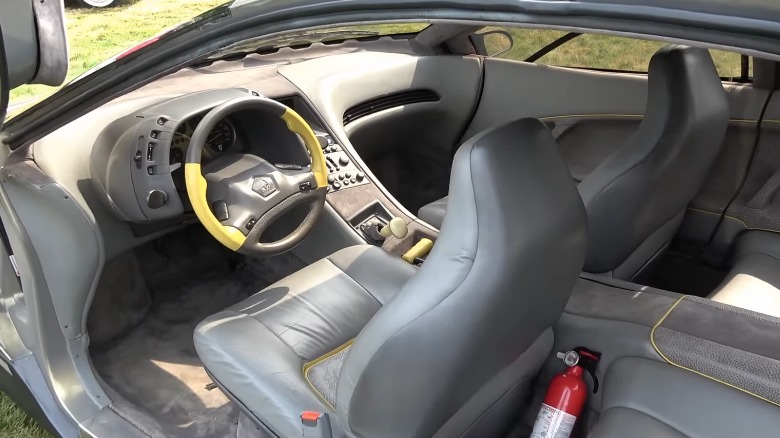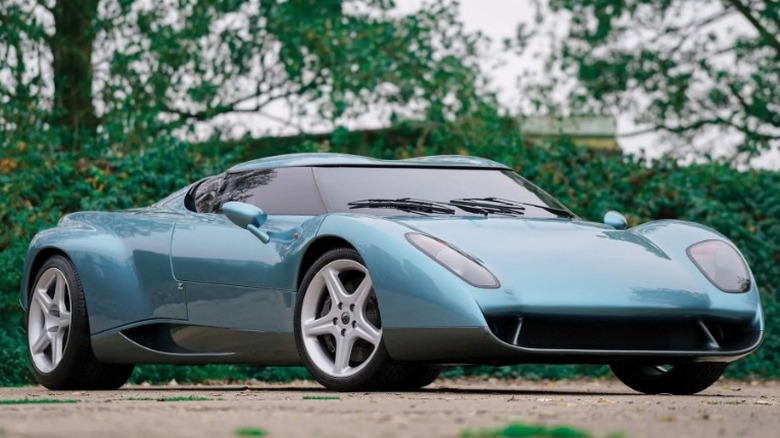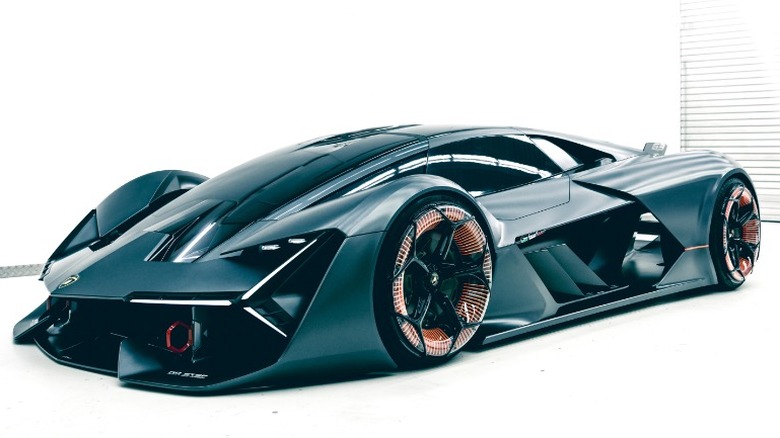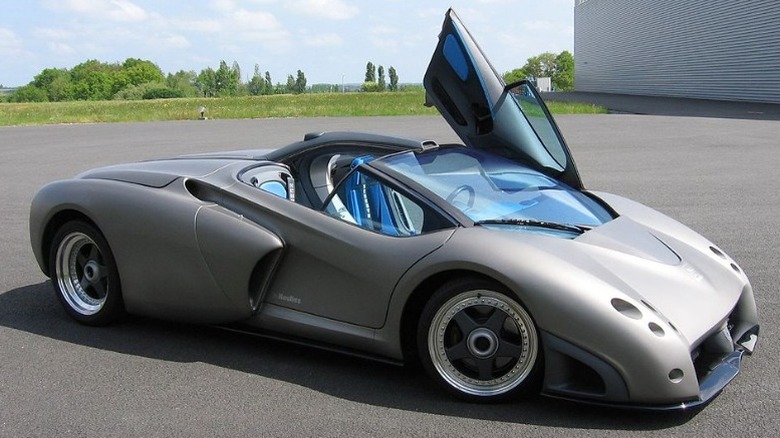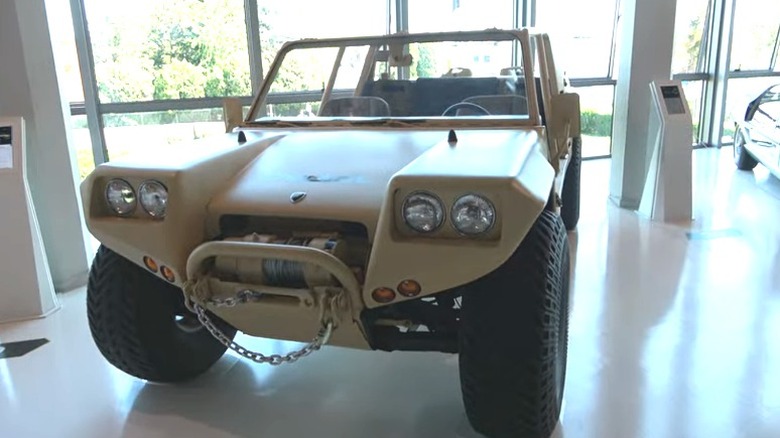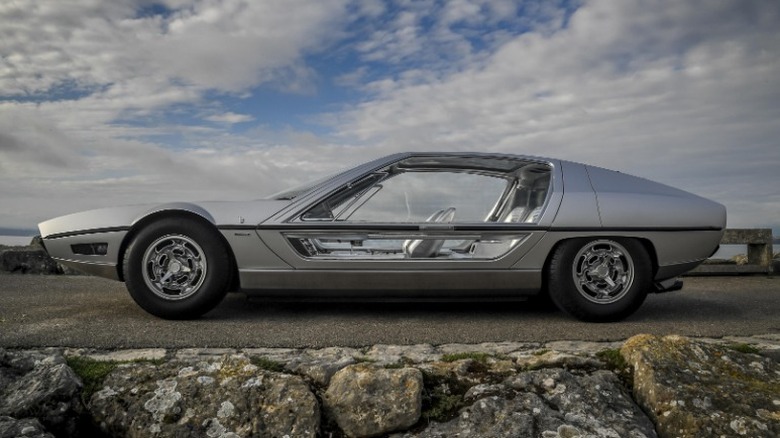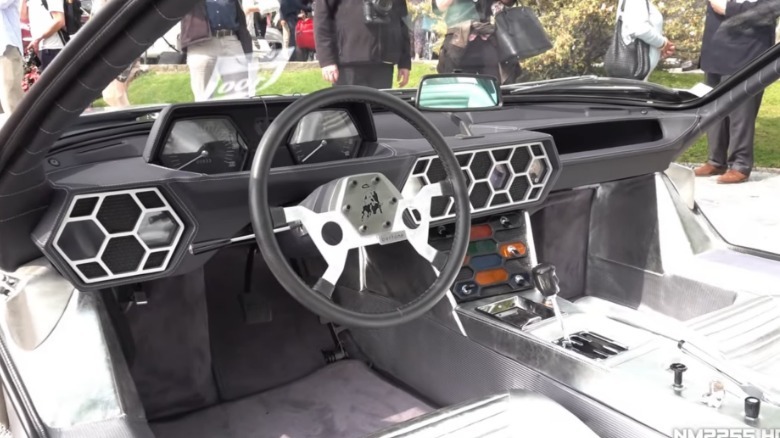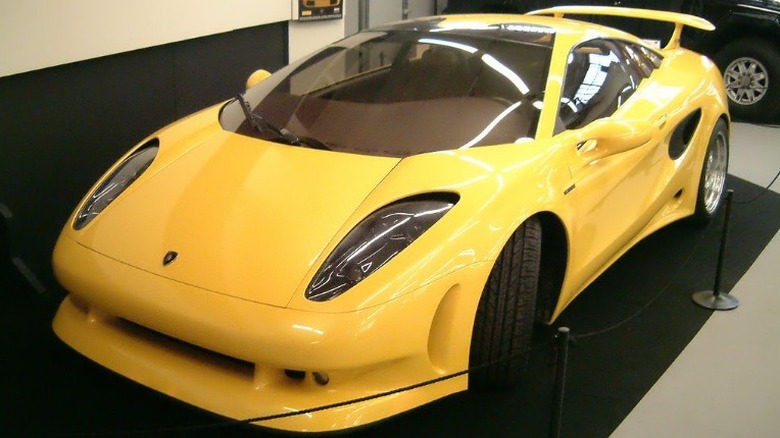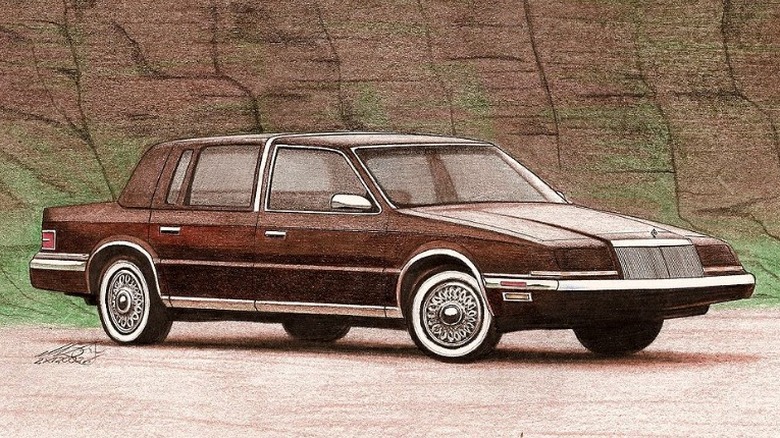10 Coolest Lamborghini Concept Cars Ever Made
Ask anyone what the most extravagant, extreme, and fastest car in the world is and there is a significant chance the answer would be Lamborghini. Once a fledgling luxury sports car maker started by a tractor manufacturing magnate, it has since grown into a premier supercar maker and an absolute legend. Now in its 60th year of operation, Lamborghini sets the standard for outrageous supercars. It has made headlines with brash and innovative models that have also set standards for others to follow. The Miura, the first mid-engined supercar, and its successor, the Countach, set aside every norm with the most garish and aggressive, yet enduring shape imaginable.
While most of the models that made it to regular production tend to look more like alien spaceships than ordinary passenger cars, others that never make it to the factory floor are even wilder. Like every auto manufacturer, Lamborghini performs exercises in design to discover in what direction to take future models and to hash out ideas in general. This usually takes shape as concept cars never intended to go into production. Many of them were never meant to be driven while others have been lost to history. Lamborghini has a tradition of showcasing daring concepts as design studies, giving us a glimpse of what designers might do if given free rein over the process. While few concepts from this company could be seen as dull, odd, or undesirable, these 10 are definitely the coolest.
Lamborghini Estoque
Ferruccio Lamborghini started his company specifically to build a better car than the Ferraris he had been driving in the early '60s. From its inception, it has been a sports car company, building two and four-seater cars meant to look good and move fast, but only with two doors — the off-road LM002 is a notable exception. But in the early 2000s, as Porsche moved into the passenger car market with its wildly successful Cayenne SUV, other luxury brands started to consider a move themselves, including Lamborghini.
This trend led to the creation of the Estoque, which would have been the first sedan ever built by the company. Differing from most concept vehicles, this was more of a prototype designed and built to be ready for serial production. It rides on an original chassis based on the Audi A8 and features an original interior and the V10 from the Gallardo. Plans for this car were to take it all the way to be included in the model lineup for the 2012 model year. However, this would never happen because, according to CEO Steven Winkleman, funding was not available. Whether this is really the reason or if it was due to some jockeying among executives at the company, nobody except them will really know.
Lamborghini Bravo
Throughout Lamborghni's history, Italian styling house Bertone has been a partner in creating the car's designs. As a part of the design process, Bertone has also come up with several concepts for Lamborghini, often showcased at events such as the Turin Motor Show, where the Bertone-designed Bravo was displayed in 1974.
The Bravo is based on the Urraco chassis and uses the same V8 engine to power it. Wedge-shaped concepts were very much in vogue in the early '70s, which is evident in this concept as well as the production Countach, perhaps the most famous wedge vehicle of all. Bertone had hoped this car would make its production as a lower-priced two-seater below the Countach and as a companion to the Urraco. Although this would never happen, the Bravo demonstrated what Bertone was capable of. The Bravo is a sleek design with straight lines to cut through the air and a glass wraparound canopy offering wide-open views on three sides. It also used the familiar five-hole wheel design of the Countach making what could have been an appropriate addition to Lamborghini's offerings.
The sleek Bravo with its Alcantara interior was not to be in the end. Lamborghini was still a small independent automaker back then, and the available budget limited what it could conceivably put into production, so the Bravo remained only a concept. One example remains, and it was painted white at some point before eventually falling into private hands at an RM Sotheby's sale in 2011 for €588,000.
[Featured image by Unknown Photographer via Wikimedia Commons | Cropped and scaled | Public domain]
Lamborghini Athon
The wedge vehicle design never went completely out of style, which is evident in the 1980 Lamborghini Athon, which could almost be seen as a successor to the Bravo. Also designed by Bertone, this sleek and angular concept looks to modern eyes like a perfect example of 1980s design, in a good way. The only way it could be more '80s is to see it driven down the strip by Max Headroom.
The Athon was more of an exercise than an attempt at a real prototype, as it lacks a roof. But it does have a large curved windscreen followed by a brown leather-covered interior full of cutting-edge '80s gadgetry, followed by a rear deck reminiscent of sci-fi spaceships. But it looks great and would turn heads anywhere if given the opportunity to drive it. This too shares underpinnings with the Urraco as well as the mid-mounted V8, which produces 260 horsepower in this setup. It is a genuinely interesting and attractive car, with several unique design features, including the rear wheel position just inches in front of the bumper.
The interior is probably where the '80s shine brightest. The gauge cluster is a retrotastic combination of digital readouts and illuminated graphics, pushbutton everything, and a mesmerizing single-spoke steering wheel a la Citroën. Most importantly, it includes a built-in calculator within reach of the driver, a must-have for every successful '80s stock broker. This car also sold at an RM Sotheby's auction alongside the Bravo in 2011 for €347,200.
Chrysler Portofino
It might be confusing to find a Chrysler vehicle included in a discussion of Lamborghini concept vehicles, but it does belong. Chrysler bought the Lamborghini company in 1987 and immediately set to work capitalizing on each company's strengths in coming up with new products and designs. In the end, the fruits of this relationship appear to have benefitted Chrysler's development more than Lamborghini, although it was the parent company's finances that ensured production of the Diablo would happen, and we should be thankful for that.
The Portofino concept car bears the names of both companies, as it is a Chrysler concept but rides on all Lamborghini rolling stock. The underpinnings come from the V8 Jalpa and are powered by the same 3.5-liter engine making 255 horsepower. Furthermore, it is a four-door sedan but retains the mid-engine setup of the donated chassis. The curvy and swooping design was a huge departure from the squared-off cars of the time, and the vertically opening doors, front and rear, made it obvious it was never to be a regular production vehicle.
The one car that was built is a fully functioning automobile. It never made it to production, but styling from it ended up in the Dodge Intrepid and the spoiler made it to the Dodge Stealth. Today, it can still be seen at the Chrysler Museum in Detroit.
Lamborghini Raptor
Although it was nearly two decades before Lamborghini had a replacement for the Countach, the company was working on designs and prototypes just a few years into Diablo production. In 1994, Chrysler sold the company to Megatech, which was the company of a Malaysian business tycoon who also just happened to be the son of the country's longtime dictator Suharto. Despite the ownership shakeup, development continued, and in 1996, the Raptor styled by Italian coachbuilder Zagato appeared at the Geneva Auto Show.
The Raptor was built atop a Diablo platform but with a much lower weight thanks to extensive use of carbon fiber and the elimination of extras such as ABS. Its purpose was to be a special limited-production model. Its shape is sleek and futuristic, owing to a novel digital design and manufacturing process that eliminated the need to first produce a scale model, much in the way modern cars are conceived. The final product is an alluring and modern shape that features the iconic "double-bubble" roof that is the hallmark of Zagato vehicles. The interior is similarly attractive, covered in yards and yards of Alcantara and little else, with a minimalist dashboard featuring a single digital screen in front of the drive — a cutting-edge feature for 1996.
This one-of-one fully functional supercar went up for auction in 2019 at RM Sotheby's. As one would expect from a Lamborghini of this rarity, it sold to a private buyer for just over $1 million.
Lamborghini Terzo Millennio
The Terzo Millennio is one of Lamborghini's most recent concepts and a clear indication of what the company is thinking for the future of its vehicle development. Developed in conjunction with MIT in 2017, the Terzo Millennio is an all-electric concept vehicle and is probably the wildest design to ever come from the Sant'Agata Bolognese company.
While Lamborghni's history has had its powerful V12 as an integral part, the company is also one known for pushing the boundaries and not being left behind by the competition. In this spirit, it produced this car as an exercise in how to build an EV the Lamborghini way, which means pushing all boundaries. For now, the only boundary outwardly being pushed is in design, as the Terzo Millenio is but a shell of what can be a car. Unlike other production-ready concepts from the company, this one is purely an exercise. However, it is an exercise that involves genuine research with MIT in coming up with cutting-edge solutions to electric mobility, such as supercapacitors that can charge and discharge in an instant, providing tremendous power on demand.
As an experiment in style, it is a rousing success. The outrageous curves and angles that form the unorthodox shape of this car are stunning. Notably, the long-sloping windshield that terminates almost at the front edge of the car suggests a driving position shifted further forward than anything else. The overall look including the illuminated wheels and integrated spoilers make it unmistakably Lamborghini and something new at the same time. If this is the future, things are looking pretty good.
Lamborghini Pregunta
The Megatech era of Lamborghini ownership proved to be productive for its development department as several concepts and prototypes came from this era, including the Pregunta. Anyone who speaks Spanish will know the name as the word for question. And if this car is asking anything, that is what a Dassault Rafale, a French Air Force multirole jet fighter, made for the road would look like. Scores of cars have flourishes and influences from aviation, but few integrate the style so convincingly as Lamborghini.
The Pregunta concept was a combined effort of Lamborghini and the now-defunct French coachbuilder Carrosserie Heuliez. It is built upon a Diablo VT chassis with its V12 engine with 530 horsepower going to the rear wheels only. The hand-built car hews closely to the Rafale as it shares the same matte gray paint. The body of the car features an abundance of curves reminiscent of the fighter jet and includes air intake not unlike those feeding turbofan engines. Inside the jet theme continues with seats resembling those in a cockpit with four-point seat belts and a digital display on the dashboard. While nobody would mistake the Pregunta for an actual jet, there is no mistaking the inspiration in design.
The Pregunta was only ever intended as a one-off hand-built project. It was produced at a cost of $800,000 as a fully functional vehicle. The last mention of its whereabouts was a listing for sale in 2013 at a price of $2.1 million.
[Featured image by Zonda via Wikimedia Commons | Cropped and scaled | CC BY 2.0]
Lamborghini Cheetah
Most Lamborghini fans know well the LM002 off-roader made in the '80s, but may not know the genesis for that production vehicle. It started in the late '70s as a cash-strapped Lamborghini looked for ways to expand its business and bring in some much-needed revenue. As many automobile manufacturers do, it made an attempt to get into the business of manufacturing vehicles for national defense. What would morph into the LM002 began as the Cheetah.
The Cheetah is a rugged all-terrain vehicle built on a tubular steel cage chassis with a Chrysler V8 mounted in the rear and driving all four wheels. It has four-wheel independent suspension rolling on oversized tires meant to easily navigate soft terrain such as sand. As a military vehicle, few accessories were included except for the ability to attach weapons overhead, including machine guns, grenade launchers, and TOW missiles. Testing was performed in the American Southwest and the U.S. Army acquired ten copies for evaluation. However, the rear-mounted engine caused poor handling and the 180-horsepower V8 engine was underpowered.
The Army declined to order any Cheetahs and would adopt the HMMWV a few years later, leaving Lamborghini with nothing to show for its efforts. The Cheetah was officially abandoned, but the concept would come up later and eventually make it into the consumer all-terrain LM002.
Lamborghini Marzal
Presented at the 1967 Geneva Motor Show was a Lamborghini styled by Bertone that would shatter all conceptions of what a car of the era should or could look like. The Marzal was praised in its day for its futuristic space-age design and the extremes to which the designer took it. It was styled By Marcello Gandini as a four-seater concept with gullwing doors composed primarily of glass. Lamborghini claims it used more glass than any car from the company as it covers a significant portion of the car's exterior.
The Marzal rides on a heavily modified Miura chassis extended to make room for rear passenger seats. It was then fitted with its own unique 6-cylinder inline engine that was essentially the rear cylinder bank from the Miura V12, partially to make room for four seats. It is the only Lamborghini to date to come with a 6-cylinder engine as well as gullwing doors. Being made of so much glass, the doors are heavy and attached through repurposed steering columns to springs in the engine bay. The interior is treated to shiny silver leather and has a luxurious dashboard with a hexagonal motif that matches the louvers over the engine bay.
This car is a magnificent testimony to Gandini's talent. It is gorgeous and outlandish and utterly desirable. Elements of its design made their way into the production Espada, but the car itself ended up in private hands and not a museum. It last sold at RM Sotheby's in 2011 for €1,512,000 and later made a run at the Monaco Historic Grand Prix in 2018.
Lamborghini Calà
When Volkswagen purchased Lamborghini, several projects were already underway and the new management needed to figure out how it would move the company forward while implementing changes to ensure it made a sound investment. This meant some projects would be canceled and others would be created. One project that today shows a vision of what could have been in the canceled Lamborghini Calà, which gives a glimpse of how the next model might have looked without the change of ownership.
During the development of the Diablo, a second smaller car was being developed with styling by long-time designer Marcelo Gandini. This car was to have a 4.0-liter V10 and was known as P140. This idea was later canceled and Gandini parted ways with Lamborghini, taking his ideas and applying them to the over-the-top Cizeta V16T. The idea was picked back up as the company had only the Diablo to sell by 1994, so Italdesign, famed designer Giorgetto Giugiaro's firm, was commissioned to design it.
The new design eschewed the straight line and sharp crease in favor of soft curves and rounded corners that had become the norm of 1990's automobile design. The result was a smashing and modern design of beautiful proportions. It received an original 400-horsepower V10 fed air through unique ram-air style scoops sitting atop each rear quarter panel, looking much like the intake on the bottom of an F-16. It's a shame the project was canceled as this is perhaps the most successful ready-for-production design of any Lamborghini concept. VW recognized the need for an entry-level model but set forth plans that would yield the Gallardo a few years later.
[Featured image by Odysseus 86 via Wikimedia Commons | Cropped and scaled | CC BY-SA 3.0]
BONUS: The Lamborghini Chrysler Imperial concept that almost happened
When Chrysler acquired Lamborghini, the legendary CEO Lee Iacocca wanted to leverage the brand's cache into upmarket versions of existing Chrysler models. As a master marketer, he saw opportunities beyond the technical expertise Lamborghini brought to the company. He was a visionary, but even the best business minds have blind spots.
According to Bob Lutz, a former General Motors CEO, while working at Chrysler, he had been asked to develop some upscale versions of existing Chrysler models with some Lamborghini flair. Knowing what a disastrous move this would be, Lutz suggested to the VP of design to create what he wanted in such a way that it would never happen, and so he did. He took an extended-wheelbase Imperial with a lowered chassis, removed the vinyl roof, and essentially vomited Lambo all over it. It featured bright red paint, Countach-style wheels and tires, supple light-tan leather, and Lamborghini badges everywhere. Finally, it received badges on the front and rear labeling the car the Chrysler Imperial Lamborghini Edition.
Lutz says it was actually the nicest-looking K-car he had seen, but reticent to admit it. The concept ultimately failed, which means it really succeeded. If not for a few people who understood what the Lamborghini name meant in a historical context, this thing could have happened, and we are all fortunate that this abomination never saw the light of day.
[Featured image by Marcin Zieliński via Wikimedia Commons | Cropped and scaled | CC BY-SA 3.0]
